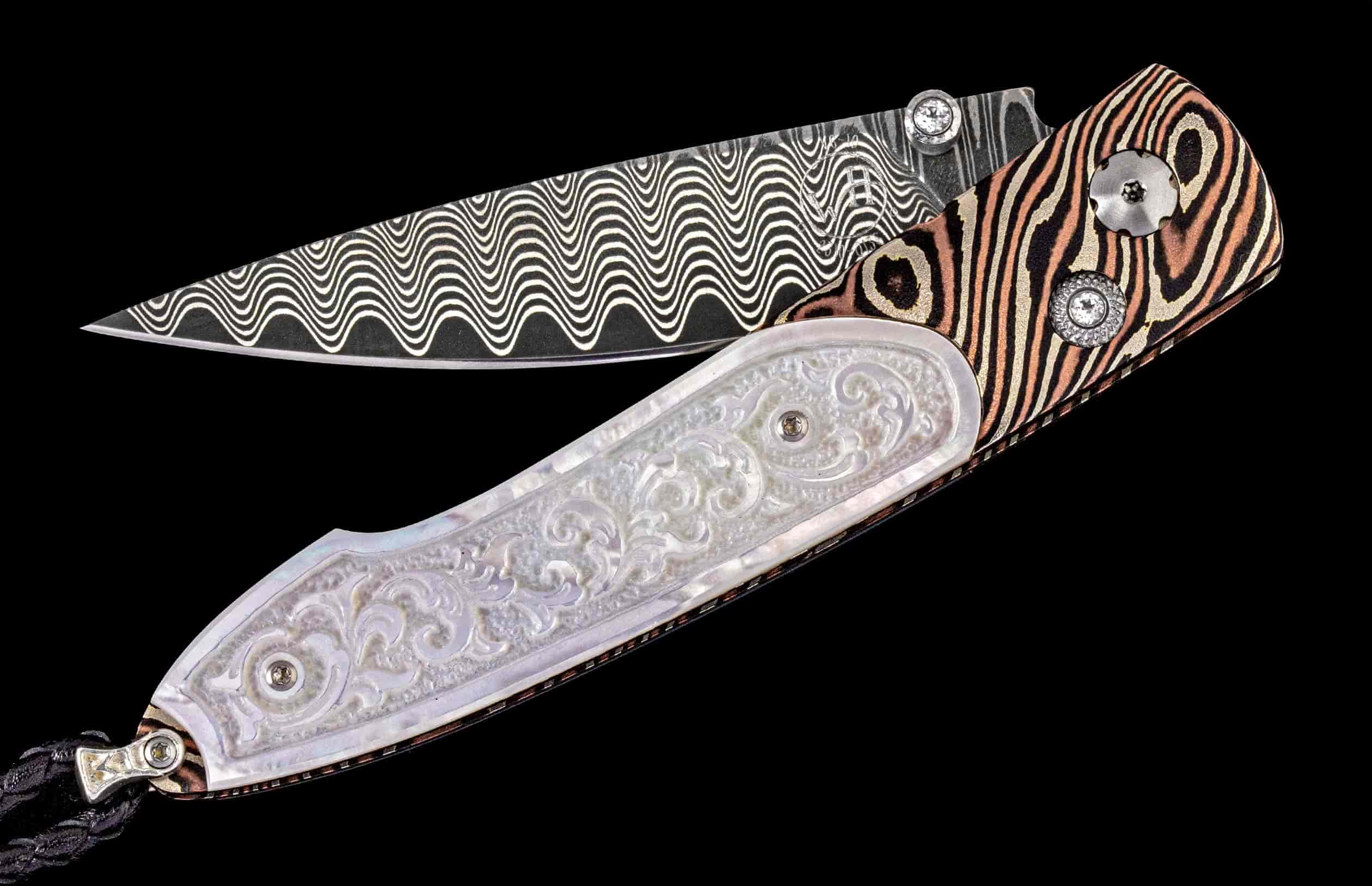Pearl Wave
Pocketknife with Mokume Gane, hand-carved mother of pearl, and 'wave damascus' blade.
Product Details
The Lancet 'Pearl Wave' features a beautiful frame in hand-forged 'Twist' Mokume Gane by Mike Sakmar, inlaid with carved Mother of Pearl. The blade is 'Wave' damascus with an extra strong core of VG-10; the one-hand button lock and the thumb stud are set with white topaz.
Sleek, elegant, refined, and comfortable in the hand and to the eye, the Lancet defines the essential gentleman’s folder in the modern world.
The ‘Pearl Wave’ features some of the exotic materials and hand-forged metals that are the hallmark of William Henry's collections; a timeless heirloom to be proudly worn and used for a lifetime before being handed-down to another generation.
Product SKU: B10 PEARL WAVE
Features & Specs
- One-hand button lock system
- Dimensions:
Blade 2.75" (69.9mm)
Handle 3.63" (92.2mm)
Overall open 6.38" (162mm)
All William Henry knives feature a unique serial number which is engraved into the blade to assure the authenticity and lifetime traceability of the product
This knife is shipped in an elegant wood presentation box, and it includes a pocket clip case made from soft, high-grade leather, with an integrated stainless steel pocket clip




